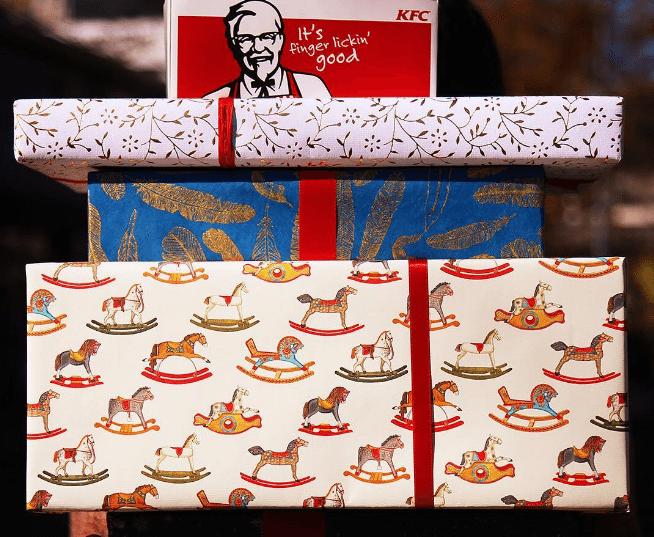Uncategorized February 9, 2017


Each family celebrates the holidays in different ways. As #WomenThatDo, we acknowledge that diverse traditions mold our cultural identities in different ways.
While many families in the West welcome Santa Clause down the chimney on Christmas Eve, other countries invite elves who leave gifts in children’s shoes. But each weird and wonderful celebration allows us to acknowledge what makes us unique and appreciate our differences.
From nightmarish folklore to delicious fried foods, here are seven different holiday traditions from around the world.
READ MORE: From Kwanzaa to Christmas: 5 December Celebrations You Should Know
New Year’s Eve is one of the biggest holiday celebrations in Ecuador. On this day, Ecuadorians celebrate the end of the old year by making lifelike straw dolls of people they dislike or disappointing political figures and then attaching lists of this person’s faults. People sometimes even attach their own faults or lost goals of the past year. Once everything is ready, the doll and the lists are thrown into the street and then burned.
According to Life in Ecuador, “The symbolic meaning of course is the forgetting of the bad of the past year and the hope that the coming year will be better.”
This tradition in Japan was born in the 1970s when Takeshi Okawara, the first manager of a Japanese KFC, was inspired to sell chicken to the country’s visitors on Christmas. Eventually, this idea was marketed as “Kentucky for Christmas” – featuring Colonel Sanders in a Santa Clause outfit, pictured above – and has now become a “national phenomenon,” says the BBC.
In fact, BBC says that “Every Christmas season an estimated 3.6 million Japanese families treat themselves to fried chicken from the American fast-food chain,” which can mean month-long wait lists for chicken enthusiasts.
In this Finnish custom, families and friends light candles and walk solemnly through the cemetery during Christmastime. Letting the candlelit scene fill them with peace, visitors mourn loved ones who have passed away.
This tradition became widespread in the 1920s, but probably dates back to pre-Christian times, says This Is Finland. “Placing candles on the graves of deceased relatives at Christmastime is a deep-rooted tradition followed by non-churchgoers and members of the Orthodox faith, as well as believers from the majority Evangelical Lutheran Church of Finland.”
On Krampus Night, December 5, the half-goat, half-demon “Christmas Devil” known as Krampus visits naughty children in Austria and Germany. This folklore legend is furry, horned and adorned with chains and bells.
The centuries-old Krampus is meant to be the counterpart to jolly old Saint Nick. While Santa Claus brings nice children gifts, Krampus brings naughty children nightmares.
READ MORE: The Christmas Folklore That Will Give You Nightmares
This Icelandic tradition spans the 13 days before Christmas and features Yuletide lads in place of Santa Claus. While these lads were once ugly, child-eating trolls in the 17th century, they transformed over the centuries to become the mischievous bumpkins Icelandic families know today.
On each of the 13 days leading up to Christmas, children leave a shoe in their bedroom window. While they sleep, a Yuletide lad will visit and leave gifts or potatoes depending on the behavior of the child on that day, says the Reykjavík Grapevine.
Scotland’s New Year’s Eve, known as Hogmanay, is best described as a series of parades and firework displays that celebrate friends and family and welcome in the new year with style. Visit Scotland explains that these traditions date back to winter solstice celebrations back in the days of the Vikings.
“First footing” is also common in Scotland. At midnight, the “first foot” to step inside a home should be a dark-haired man, as this is said to bring luck. The Scotland website explains, “Fair-haired first footers were not particularly welcome after the Viking invasions of ancient times.”
While Norway celebrates Christmas with traditional family time and tree-decorating, the country has its fair share of superstitions. According to Travel Signposts, a little elf names Nisse guards the house and the farm animals, but if he is not fed a bowl of porridge with butter on Christmas Eve, he will find another home to protect.
In addition, many Norwegians hide all their brooms in the house, as folklore says that witches and other spirits will steal their brooms to go for rides on Christmas Eve.
READ MORE: Christmas Quiz: 10 Festive Brainteasers
Sorry, no related posts found.